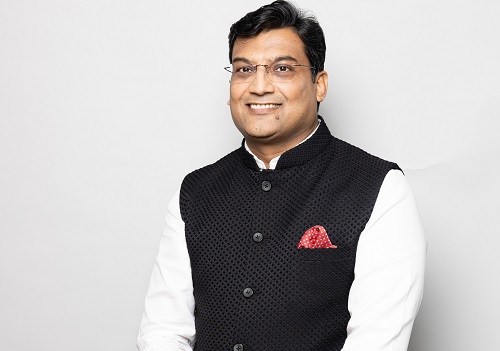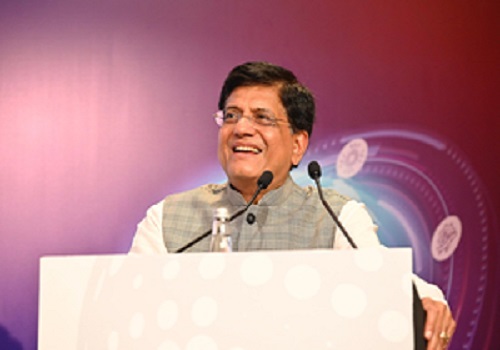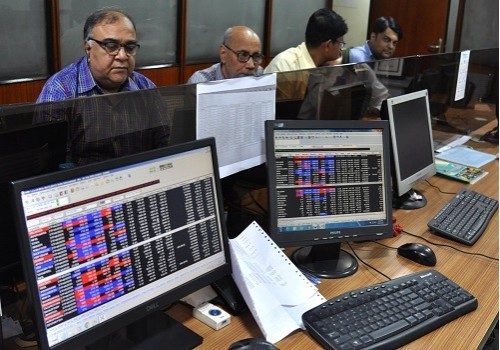On top of the world, yet a long way to go By Navneet Munot, HDFC AMC

Follow us Now on Telegram ! Get daily 10 - 12 important updates on Business, Finance and Investment. Join our Telegram Channel
There is one trivia question that almost everyone has been getting right over the years: "Which is the most populous country in the world?" The answer has always been China. This is a statistic for which the ‘Numero Uno’ position did not change for a very long time.
However, this April, the answer changed as China lost the population crown to India. This did not go unnoticed, especially since India is the world’s largest democracy and always captures the attention of the world at large. India's climb up the population leader board has put a spotlight on the abundance of possibilities that lie ahead during Amritkaal, the 25-year stretch culminating in India's 100th year of independence in 2047.
India – A Unique Growth Model
India – A Unique Growth Model A unique combination of Democracy, Demographics, Demand and Digitization give India a potent force to take the next step, or rather the next leap towards becoming a global superpower. Emphasis on structural reforms and agile execution aimed at ease of doing business, building best-in-class physical, virtual and social infrastructure, improvement in quality of life is paving the path for a robust, sustainable and inclusive growth. Unlike China, where the growth model has been largely state-driven and environmentally unsustainable, in India, one can expect the growth to be more inclusive and sustainable, driven by entrepreneurship with the Government acting as a facilitator. Vibrancy of capital markets in India helps in making growth more inclusive.
The “Age Old” question
While change in population pecking order happened recently, this development was on the cards for quite some time. China’s now-discontinued but once controversial one-child policy meant that this reversal in population leader board would happen sooner or later. Few months ago, China reported a decline in its population for the first time in decades and brought the focus back on demographics. While an aging China has many implications for the global economy, it has also brought into focus the potential challenges that could be faced by the elderly, especially in an aging country, where working age population could be outnumbered by the elderly. With an inverted pyramid, also known as 4-2-1 problem (4 grandparents and 2 parents being dependent on a single child) and lack of social security benefits, China may be staring at a demographic predicament. Although India’s population is relatively young (median age of 28 years vs 38 years for China) and is expected to decline only after 2050, steps in the right direction today are critical to avoid the possibility of a large greying population without adequate means for sustenance. As ironic as it may sound, gradual increase in life expectancy (doubled from ~35 in 1950s to ~70 now and expected to increase further) makes matters difficult.
India has made significant progress in establishing a social security net in recent years, through initiatives like the JAM Trinity and Direct Benefit Transfer. While these efforts have been transformational, they alone cannot fully address the challenges in supporting the needs of a larger ageing population. Recent civil unrest in France is a case in point (protests against raising of minimum retirement age for full pension). Additionally, the increase in the number of gig workers who do not have access to social security benefits underscores the need for financial planning. Therefore, it is crucial to prioritize the often-neglected financial goal of retirement.
In fact, it would be fair to say that retirement planning is by far the most critical financial goal. Three important aspects stand out. Firstly, for most people, retirement is a certainty. Secondly, with medical advancement and increasing life expectancy, the number of years one lives post-retirement has increased; however, the number of years is an unknown variable which makes retirement planning critical, yet challenging. Lastly, since retirement is in the distant future, most people tend to put off retirement planning till it is too late. And even those who do plan, underestimate the impact of inflation (both, price and lifestyle) over long timeframes
The lack of financial preparedness is not restricted to India alone. Globally too, the retirement savings gap has widened over the years. According to the World Economic Forum, the retirement savings gap for eight of the world’s largest economies widened to USD 70 Trillion in 2015. This is expected to further increase to USD400 Trillion by 2050. In the US too, a staggering 26% of non-retired adults did not have any retirement savings, as per a US Federal Reserve Survey of 2020. In India, in absence of similar retirement benefits, and with the retirement age lower than most major economies, the most likely avenue for creating retirement corpus has to be through investments in risk assets like equities, provided this is done with a long-term investment horizon
The “Investment” Solution
Historically, Indian households have allocated a disproportionately high share of wealth to physical assets. An average Indian household holds majority of its wealth in Real Estate and Gold, with financial assets accounting for a significantly small component. This is unusual in the global context. As per RBI’s Household Finance Committee Report(2017), more than 50% of households expect to rely on support from their children during old age, banking on the uncertain income-generating capacity of future generation. Thus, a large proportion of the nation's wealth being locked in largely illiquid assets, like real estate etc does not help either the country at large or the investors themselves in their old-age.
Recently, the trend has shifted away from illiquid assets and is more towards an increase in financialization of savings. More importantly, a mix of financial savings has started changing in favor of capital markets as reflected in the increase in Demat accounts and SIPs. Despite the recent increase, there is still a long runway ahead, as the overall equity allocation among households in India is less than 5%. From a long-term standpoint, equity as an asset class generates inflation-outpacing returns, and equities, especially Equity MFs, must be the go-to investment avenue for investors to create a retirement corpus over a 15-20 year time horizon, if not more.
India has an ambition to be a developed country in its Amritkaal. Humongous amount of risk capital is needed to meet India’s ambitious infrastructure development and growth objectives. Hence, an increase in depth of the capital market is so critical. Healthy domestic equity flows will also help the Government's asset monetization program while ensuring that ownership remains with its own citizens. Even in the start-up ecosystem, there is an enormous need for risk capital. While, entrepreneurial ambitions of a young India combined with a funding boom has spelt a golden period for the start-up ecosystem, bulk of this funding has so far been from foreign VC firms. Looking ahead, getting Indian risk capital to fund entrepreneurial ambitions in the country is another goal worth pursuing.
Robust domestic equity flows make the equity market less susceptible to shocks from foreign capital flight – something which we witnessed last year when inflows in Mutual Funds helped to counterbalance FPI outflows and kept Indian equity markets largely resilient. This had a positive ripple effect on the overall health of financial markets, and in turn, macro-economic stability of the country. Strong domestic equity flows will, in fact, encourage foreign investors to invest more in India as the counterbalancing stability provided by domestic flows can add another positive dimension for those looking to invest here. Over the years, foreign investors have viewed India as one of the preferred investment destinations, owing to a structural growth story at the macro level and a diverse bottom-up stock-picking opportunity at the micro level. Stability provided by domestic flows and greater market depth can provide the third element of interest for global investors to allocate more to India.
Having wider participation in equity markets could enable more equitable distribution of wealth in the society as more people would be able to participate indirectly in the nation’s growth story.
An Aatmanirbhar Bharat
In view of this, it is imperative that the policy environment remains highly conducive for encouraging investment in equity as an asset class. All said and done, while we focus on indigenization of various aspects of our economy, we would do well to not overlook the importance of domestic risk capital in making the nation economically and our population financially ‘Aatmanirbhar’. While we have overtaken China demographically, we still have a long way to go on other fronts. For instance, in 2021, China’s per capita income ($12,556) was 6 times that of India’s ($2,256). Bewilderingly enough, in 1990, India’s per capita income ($368) was higher than China’s ($318). This divergence over the last three decades could be attributable to China’s focus on manufacturing and infrastructure. Both these aspects have been at the forefront of Indian policymakers’ agenda. Likewise, India could take other cues as well from the east and the west, emulate their fruitful measures, avoid their follies; and unlock our true potential.
It is often said that China is growing old before growing rich. While India, on its part, has always been culturally and spiritually rich, it is high time that in this Amritkaal, every citizen also becomes economically rich before growing old, and we regain our old title of ‘Sone ki Chidiya’ or ‘The Bird of Gold’.
Above views are of the author and not of the website kindly read disclaimer





.jpg)




Tag News

We anticipate immense potential benefits from the upcoming Sovereign Gold Bond Tranche in FY...









